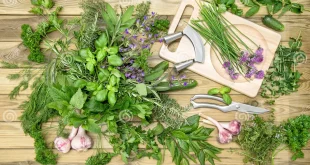Why Plant in Spring?
Spring offers perfect conditions for plant development. Hotter temperatures and longer sunshine hours empower solid root improvement. Moreover, nurseries are supplied with a wide assortment of plants, making it simple to discover the best choices for your plant. By planting in the spring early, you give your plants the best chance to develop and blossom all through the season.
Preparing Your Garden
Before planting in spring, clear out ancient plants, weeds, and flotsam and jetsam. Release the soil with a fork or tiller, guaranteeing appropriate circulation and waste. Including compost or natural matter enhances the soil with supplements. If utilizing raised beds or holders, make beyond any doubt they have great seepage and high-quality soil. Appropriate planning lays the establishment for an effective spring garden.
Choosing the Right Plants
Selecting the right plants is significant. Cool-season crops like peas, lettuce, and spinach flourish in early spring, whereas tomatoes and peppers lean toward a hotter climate. For blossoms, consider tulips, daffodils, and primroses. Perennials like lavender and hostas include long-lasting magnificence. Check plant labels for light and space prerequisites to guarantee they develop well in your garden.
When to Begin Planting
The best time for planting depends on your area. Hold up until after the final ice date in your zone to maintain a strategic distance from plant harm. Early spring is best for cool-season crops, whereas summer plants ought to be planted once temperatures rise. Checking your neighborhood ice dates will offer assistance in arranging the ideal time to begin your spring garden.
- Step-by-Step Planting Guide
- Dig gaps twice the width of the root ball.
- Space plants legitimately to dodge overcrowding.
- Gently evacuate plants from holders and release the roots.
- Place the plant in the gap and cover it with soil.
- Press the soil delicately and water thoroughly.
- Add mulch to hold dampness and direct soil temperature.
Watering and Fertilizing
Watering accurately is key to a sound cultivate. Profound watering once a week is way better than visit shallow watering. Utilize natural or slow-release fertilizers to give fundamental supplements. Overfertilizing can cause over-the-top leaf development and diminish blossoms. Routinely check for pests and maladies to keep your plants healthy.

Companion Planting Benefits
Companion planting makes a difference and makes strides in plant wellbeing and efficiency. For illustration, basil repels bugs when planted close to tomatoes, and marigolds pull in advantageous creepy crawlies. Beans enhance the soil with nitrogen, profiting verdant vegetables. Blending the right plants together boosts your garden’s success.
Sustainable Planting Tips
A feasible cultivate benefits both you and the environment. Select local plants that require less water and upkeep. Utilize natural planting strategies to dodge destructive chemicals. Composting kitchen scraps gives characteristic fertilizer. Mulching holds dampness and smothers weeds, decreasing the need for herbicides.
Pest Control Strategies
Pests can be a challenge in any spring cultivate. Routinely review plants for aphids, slugs, and caterpillars. Normal predators like ladybugs offer assistance to control bugs. Utilize push covers to secure youthful plants. Eco-friendly alternatives like neem oil or insecticidal cleanser can offer assistance in overseeing invasions without hurting useful insects.
Adding Excellence to Your Garden
A spring plant isn’t fair around plants—it’s approximately making an unwinding space. Include enriching components like statues, water basins, and trellises. Select colorful and fragrant blossoms to create a welcoming environment. Pathways and arbors give structure while improving the garden’s by and large beauty.
Extending Your Plant into Summer
Plan ahead to keep your plant flourishing past spring. A few cool-season crops, like kale and broccoli, can develop into summer with legitimate care. As spring plants blur, supplant them with summer blossoms like sunflowers and zinnias. Legitimate arranging guarantees a nonstop show of color and productivity.
The Delight of Gardening
Planting is more than fair a hobby—it’s a fulfilling encounter. Cultivating interfaces you with nature, diminishes stretch, and gives new deliver. Whether developing blossoms, herbs, or vegetables, observing your plants flourish brings a sense of fulfillment. A well-tended plant gets to be a tranquil retreat and a source of delight all through the season.

FAQs
1. When ought to I begin planting in spring?
After the final ice date in your region, as a rule, mid- to late-April.
2. Which Plants Thrive Best in a Spring Garden?
Flowers like tulips and daffodils, and vegetables like peas and lettuce.
3. How do I get ready my cultivate for planting?
Remove flotsam and jetsam, extricate soil, and include compost for way better growth.
4. How frequently ought to I water my plants?
Water profoundly once a week, altering for climate conditions.
5. Can I expand my plant into the summer?
Yes! Supplant spring plants with summer assortments like tomatoes and zinnias.
 Spring Garden
Spring Garden


